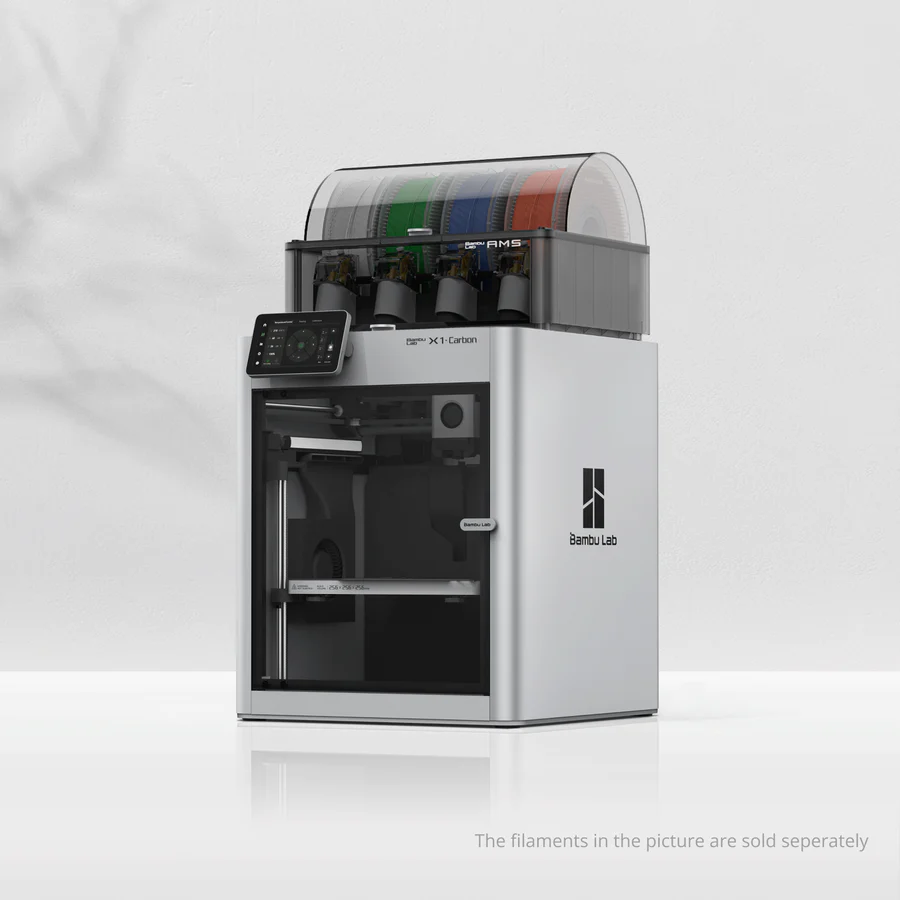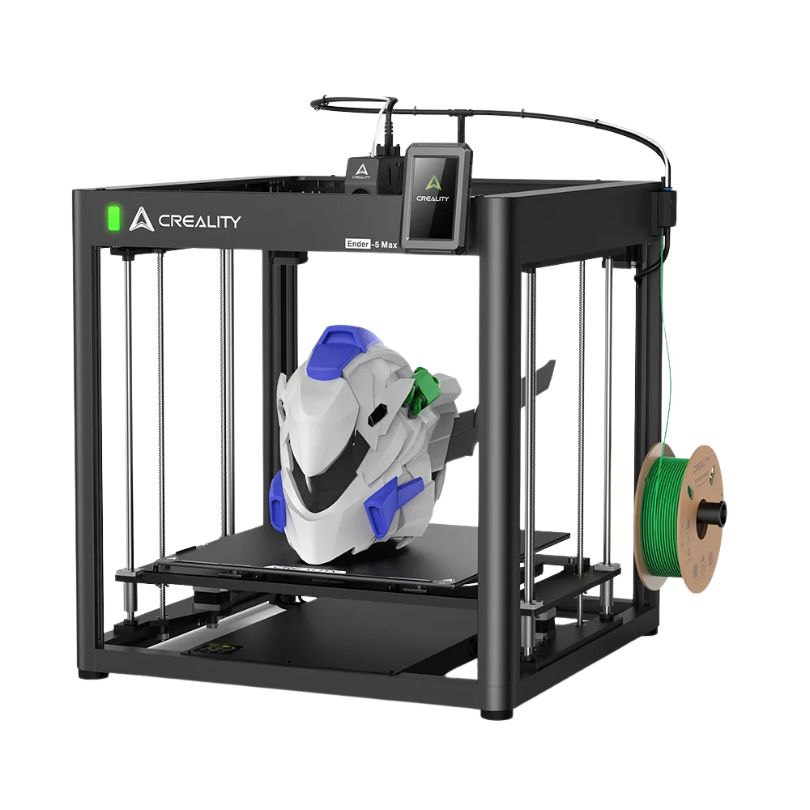Compare X1 carbon vs Ender 5 Max
Comparison between the best 3D printers
Choose the best 3D printer at the best price. The cheapest 3D printers are here.
Buy a 3D printer here with 3D Fila.
 |
 |
|
| Model | X1 carbon |
Ender 5 Max |
| Printing Material | Filament | Filament |
| Buy Filament for Bambu Lab X1 carbon | Buy Filament forCreality Ender 5 Max | |
| Estimated price | $1449,00 | $769,00 |
| Manufacturer | Bambu Lab | Creality |
| Release Year | 2023 | 2025 |
| Print Volume [mm] | 256x256x256 | 400x400x400 |
| Printer Size [mm] | 389x389x457 | 649x721x850 |
| Weight [kg] | 14,13 | 25,9 |
| Power Loss Recovery | YES | YES |
| Enclosed printer | YES | NO |
| Bed Leveling | Automatic | Automatic |
| Filament End Sensor | YES | YES |
| Bed type | Heated | Heated |
| Power supply system | Direct Drive | Direct Drive |
| Standard nozzle | 0,4 | 0,4 |
| Maximum Nozzle Temperature [°C] | 300 | 300 |
| Maximum Bed Temperature [°C] | 120 | 100 |
| Maximum printing speed [mm/s] | 500 | 700 |
| Filament holder | YES | YES |
| Camera for supervision | YES | YES |
| Recommended filaments | PLA, PETG, TPU, PVA, PA, PA-CF, Nylon, PC | Hyper PLA/PLA/PETG/TPU95A/ABS/ASA/PLA-CF/PA/PLA-Silk |
| Recommended slicers | Bambu Studio, Super Slicer, Cura, Prusa Slicer, Orca | Creality Print 5.1 |
| Maximum Resolution [mm] | 0,1 | 0,1 |
| Processor | Quad ARM A7 1.2 GHz | |
| Display | Touchscreen 5'' | Touchscreen 4,3'' |
| Power Supply | 350 W | 1250 W |
| Connectivity | Wifi, Bambu bus, Cartão SD | USB, Wifi |
| Operating systems | Windows, Linux, Macbook | Windows |
| Date of registration in the system | 2024-04-10 | 2025-02-18 |
| Release date | 2023 | 2025 |
| Extra features | The Bambu Lab X1 Carbon revolutionizes 3D printing with stunning design, high print speeds, and a streamlined user experience. It stands out with its CoreXY system, a hotend capable of reaching 300°C, allowing for a wide range of filaments. Its LiDAR-assisted bed leveling system, vibration compensation, and AMS multicolor printing capability raise the industry standard. Print quality is impressive, with the ability to fine-tune for perfection. The X1 Carbon, with its closed build volume, not only promises but also delivers one of the most advanced 3D printing experiences available to consumers. | The Ender 5 Max by Creality features a 400 x 400 x 400 mm build volume, a rigid aluminum frame, and 36-point auto bed leveling. With speeds up to 700 mm/s, it boasts a hardened dual-gear extruder and a 1000W heated bed, reaching 80°C in just 200 seconds. It supports remote management via WLAN, a tri-color status indicator, and quiet operation, making it ideal for high-precision, high-productivity 3D printing. |
| Support for multiple colors and materials (AMS and CFS) | YES | NO |
Notes * |
||
| Cost-benefit | 7 / 10 | 7 / 10 |
| Hardware | 6.4 / 10 | 5 / 10 |
| Tela | . | . |
| Print volume | 4 / 10 | 4 / 10 |
| Performance | 4 / 10 | 6 / 10 |
Conclusion |
| **Conclusion:** When comparing the Bambu Lab X1 Carbon and the Creality Ender 5 Max, it's clear that both 3D printers cater to different needs and preferences within the 3D printing community. The X1 Carbon, released in 2023, offers advanced features such as a closed build volume, high print speeds, and the capability to handle a wide variety of filaments due to its high-temperature hotend and innovative technologies like LiDAR-assisted bed leveling. These features make it ideal for users seeking precision and versatility in their printing tasks. Its relatively higher price reflects the premium technology and user experience it provides, making it suitable for professionals or serious enthusiasts. On the other hand, the Ender 5 Max, designed with a larger build volume and capable of high printing speeds, is built for those who prioritize size and productivity. While it may lack some of the cutting-edge features of the X1 Carbon, it still delivers solid performance and includes essential conveniences like automatic bed leveling. This model represents a more budget-friendly option, making it a great choice for hobbyists or those starting in the 3D printing realm. Ultimately, the best choice between these two models will depend on individual priorities—whether one values advanced technology and versatility or requires more print volume and a lower price point. Both printers score similarly in cost-benefit analysis and performance but cater to distinctly different user needs, ensuring that potential buyers can find a suitable match based on their specific printing requirements and financial considerations. |

